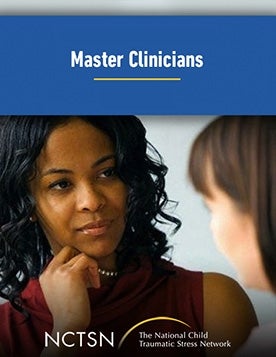
Treatment Strategies for Adolescents Dealing with Ongoing Trauma
Addresses the treatment needs of adolescents who have experienced trauma and still find themselves in challenging situations.
The following resources on child trauma were developed by the NCTSN. To find a specific topic or resource, enter keywords in the search box, or filter by resource type, trauma type, language, or audience.

Addresses the treatment needs of adolescents who have experienced trauma and still find themselves in challenging situations.

Presents issues related to trauma in Latino and Hispanic populations.
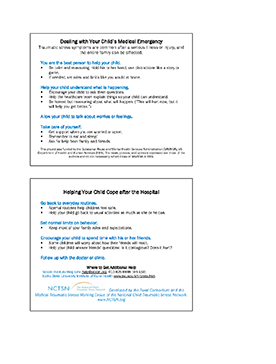
Gives parents advice for coping when their child is injured. This pocket card is intended to be shared with parents by emergency medical technicians and paramedics.
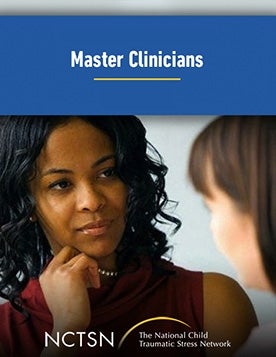
Discusses the complexity of children's reaction to and processing of traumatic events.
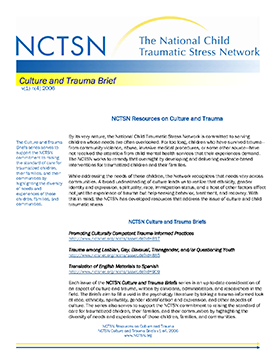
Outlines the NCTSN resources that are available on culture and trauma before 2006.
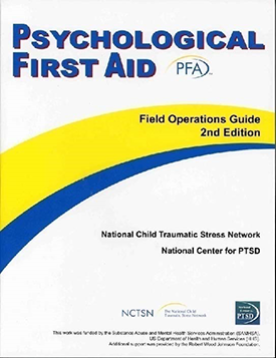
Gives guidance on responding to disaster or terrorism events using the Psychological First Aid intervention. This evidence-informed approach helps to assist children, adolescents, adults, and families in the aftermath of disaster and terrorism.
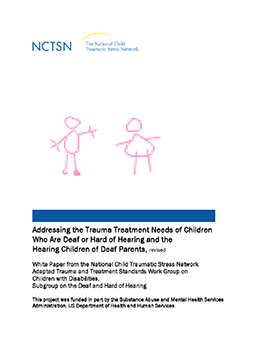
Provides information on how to enhance opportunities for deaf and hard of hearing children who experience traumatic stress to receive treatment.
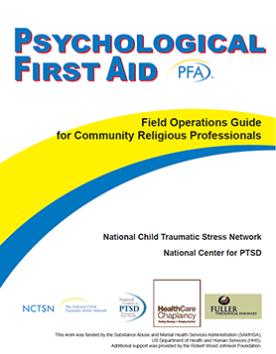
Provides guidance on responding to disaster, violence, or terrorism events using the Psychological First Aid intervention.
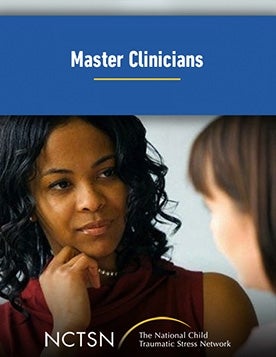
Defines trauma in the early years and discusses the sources of traumatic events. This webinar describes the impact of trauma on a child's early development and discusses the role caregivers play in a child's response to trauma, as well as treatment goals when treating both child and parent.
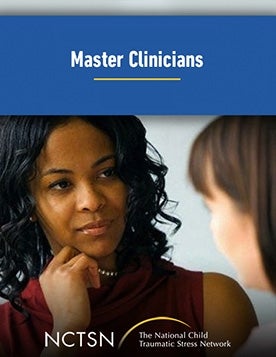
Synthesizes research and clinical knowledge about typical brain development and the high impact that the stress response has on the developing brain. This webinar highlights the clinical application for clinicians and other professionals who work with traumatized children.
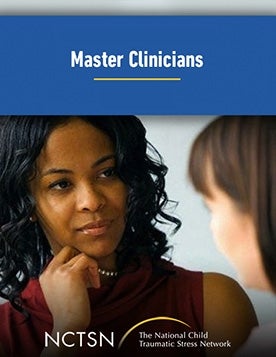
Outlines the major issues associated with the assessment of trauma in children and adolescents. This webinar includes psychometrics, comparison between the benefits and limitations of self-reporting and caretaker reports, specific targets for evaluation, and choice of assessment instruments.
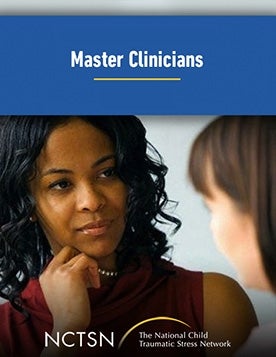
Presents three experienced clinician-researchers in the field of child traumatic stress highlighting the developmental impact of child trauma on early childhood, middle childhood, and adolescence.